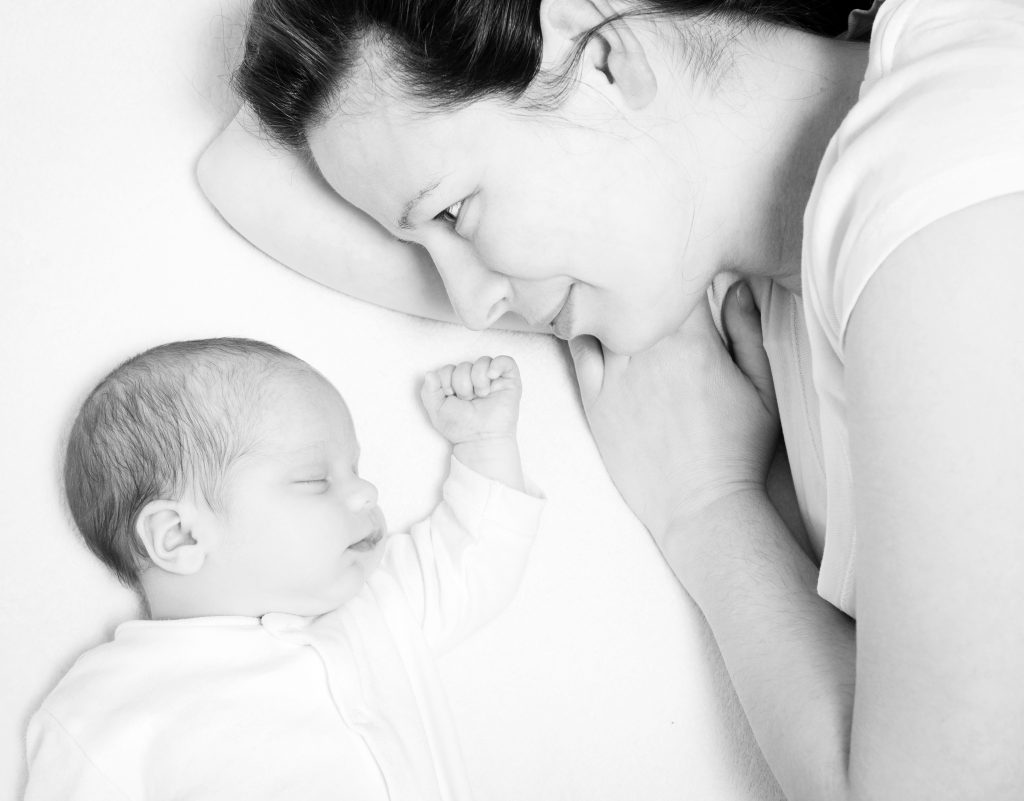Do’s and Don’ts of Co-Sleeping
There are few parenting topics more hotly debated than the subject of co-sleeping with your baby. Many paediatricians, clinic nurses and family members will tell you that it is unsafe. They suggest you might roll onto your baby and smother them, or that there is an increased risk of SIDs. In fact, all the recent research shows this is untrue. There are some great benefits to both parents and babies in co-sleeping, if you do it correctly. Here is a little about co-sleeping, and some essential do’s and don’ts.
What do we mean by co-sleeping?
The broadest definition of co-sleeping is that baby and parent sleep ‘within sensory reach’ of each other. For some people, this means baby sleeping in the bed with them, others may prefer baby in a basket between them on the bed, and for some it may mean a bassinette or cradle within reach of the parents’ bed.
There are slightly different considerations for baby’s sleeping on the same surface as parents to those sleeping in their own bed within sensory reach. However one thing is common – a baby should never sleep in the same room as a smoker. This has been identified as a significant increase in the risk of SIDs, so if you or your partner are smokers, baby should have their own space.
Benefits of Co-Sleeping
According to James McKenna[i], co-sleeping is ‘biologically appropriate’ given the dependent nature of human infants. In McKenna’s research, co-sleeping, particularly safely on the same surface – has been shown to:
- Help synchronise heartbeat, brainwaves, breathing rate, oxygenation, and temperature of babies and parents, strengthening the parent/baby bond
- Because both babies and parents sleep more lightly and rouse more frequently, dangerous periods of apnoea (related to SIDs) are interrupted
- Lighter sleep is associated with REM sleep, which is vital in brain development in infants
- Both parents and babies slept longer, decreasing exhaustion
- Fathers who sleep close to their baby show a decrease in testosterone leading to improved sensitivity and responsiveness in parenting
- Small studies suggest babies who co-sleep go on to develop early signs of independence in dressing and problem resolution
Same Surface Co-Sleeping versus Sensory Reach
Same Surface Sleeping
The most beneficial form of co-sleeping is same surface sleeping, where baby sleeps in your bed with you. Studies show that although this form of sleeping causes lighter sleep with more waking, the quality and quantity of sleep for both baby and parents is improved, not least because there is less disruption for both mother and baby. However, you need to make sure your bed is safe for baby:
Do’s
- The surface should be smooth and solid – no waterbeds or sheepskin underblankets
- Ensure there is not a gap between your bed and a wall in which the baby can get trapped
- Avoid heavy blankets, doonas or excessive amounts of pillows that may overheat or suffocate baby
Don’ts
- If you or your partner are heavy drinkers, drug users or take sedatives, it is not a good idea to co-sleep on the same sleep surface as you may not be as aware of your sleep positions as a lighter sleeper
- Babies should not co-sleep with older children – even toddlers – or pets
- Never leave your baby alone on an adult bed – it’s amazing how quickly they learn to roll over!
- Wrapping or swaddling your baby when you are co-sleeping on the same surface is not advised
If any of these present a problem, consider sensory-reach co-sleeping as an alternative.
Sensory Reach Sleeping
Sensory reach co-sleeping refers to baby sleeping in their own ‘bed’, within reach of yours. If this is your preference, you should follow general sleep instructions:
- always put baby on their back
- avoid soft mattresses and pillows
- avoid heavy blankets
- swaddle or wrap baby if you and your baby prefer
Who Wakes Who?
Interestingly, co-sleeping studies conducted by James McKenna suggest that babies wake their mothers 60% of the time, but mothers wake their babies 40% of the time. When mums wake their baby it is with touches, hugs and whispers. This loving attention increases the heart rate and oxygenation of the baby, and reduces the risk of apnoea. It also reduces stress and cortisol levels in both mother and baby.
Co-Sleeping and Breastfeeding
Co-sleeping and breastfeeding are a match made in heaven. Research by The SIDs Global Task Force suggests that while safe co-sleeping reduces the risk of SIDs, when it is combined with breastfeeding the risk is even lower.
The benefits of safe co-sleeping are also amplified when baby is breast fed. Disruption to sleep is minimal, and studies show the position in which most mums feed their baby actually provides the optimally safe space – baby’s face at breast level, mums arm between baby’s head and the pillow, legs bent.
If you would like to find out more about the benefits of co-sleeping – or any other pregnancy, birth or postpartum issue – I would love to chat with you. Give me a call on 0422 258 771. or contact me here:
[i] Director Emeritus of the Mother-Baby Behavioural Sleep Laboratory at Notre Dame University
